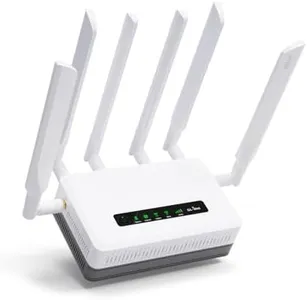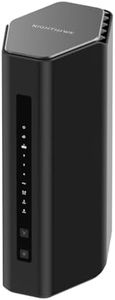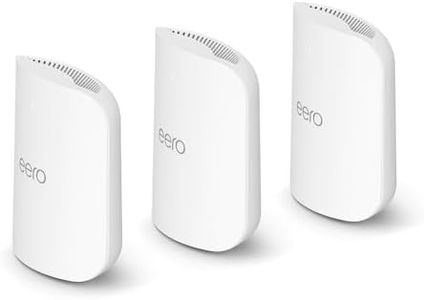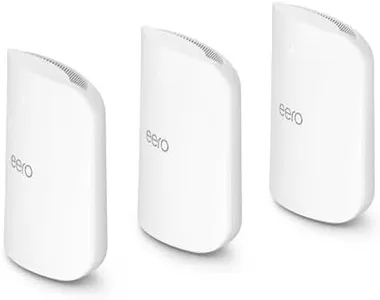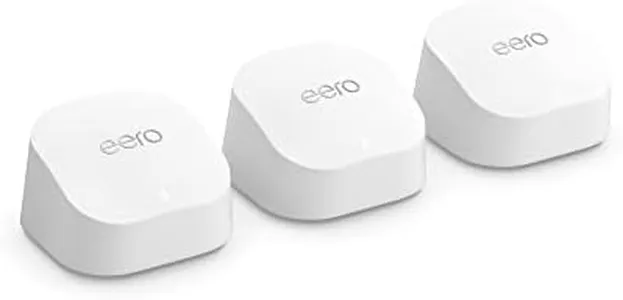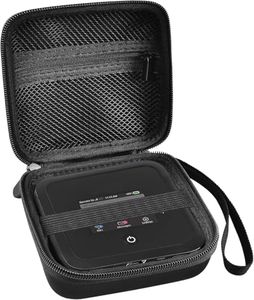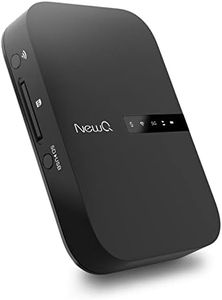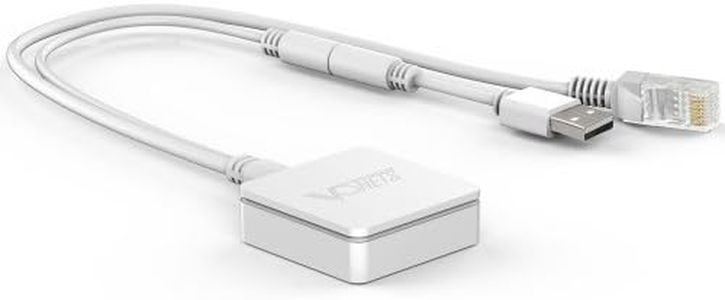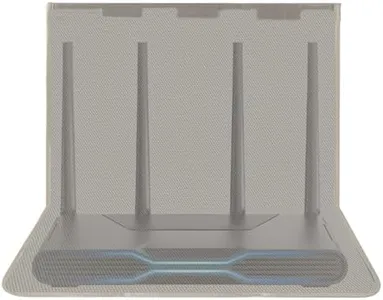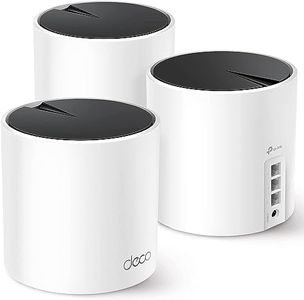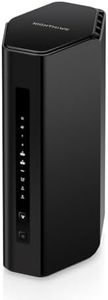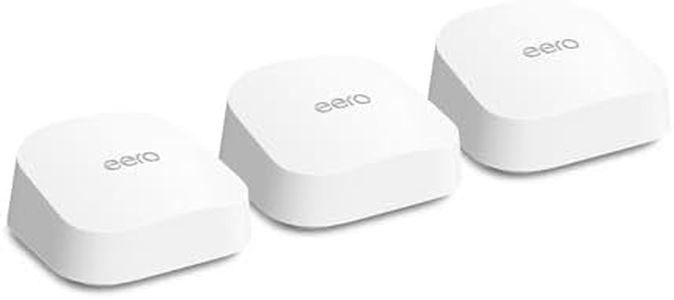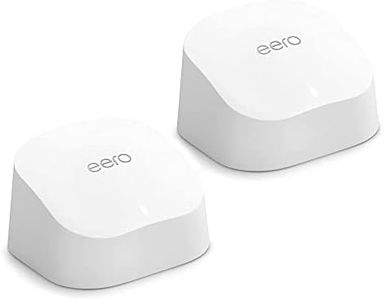10 Best Wifi Home Routers 2025 in the United States
Our technology thoroughly searches through the online shopping world, reviewing hundreds of sites. We then process and analyze this information, updating in real-time to bring you the latest top-rated products. This way, you always get the best and most current options available.

Our Top Picks
Winner
NETGEAR Nighthawk Tri-Band WiFi 7 Router (RS500) – Router Only, BE12000 Wireless Speed (up to 12 Gbps) - Covers up to 3,000 sq. ft., 120 Devices – 2.5 Gig Internet Port - Free Expert Help
Most important from
1648 reviews
The NETGEAR Nighthawk RS500 is a cutting-edge WiFi 7 tri-band router designed to deliver ultra-fast wireless speeds up to 12 Gbps, which is about 2.4 times faster than the previous WiFi 6 standard. This makes it ideal for activities like real-time gaming, 4K or 8K streaming, and video calls that require strong, smooth connections. It covers up to 3,000 square feet, which should be sufficient for most medium to large homes, supporting up to 120 connected devices simultaneously. The router features multiple high-performance antennas and offers a tri-band setup, meaning it splits your wireless traffic across three frequency bands to reduce congestion and maintain speed.
Wired connections are also well supported with one 2.5 Gigabit internet port plus three 1 Gigabit LAN ports, allowing faster and stable links for gaming consoles or smart TVs. Security is a strong point, with built-in NETGEAR Armor protecting against malware, hackers, and identity theft, plus automatic firmware updates to keep the router secure over time. However, this router does not include a modem, so you’ll need a separate cable or fiber modem to get online. Also, it is designed specifically for use in the U.S., so it may not work optimally elsewhere. The sleek design is compact, making it easy to place discreetly.
Though the price may be higher than simpler routers, this model is well suited for tech-savvy users or households with many devices and high-speed internet plans who want future-proof performance and robust security.
Most important from
1648 reviews
NETGEAR Orbi 370 Series Dual-Band WiFi 7 Mesh Network System for Home (RBE373) – Wireless Router + 2 Extenders, Security Features, 5 Gbps, Covers 6,000 sq.ft., 70 Devices, 2.5GB Internet Port, BE5000
Most important from
3473 reviews
The NETGEAR Orbi 370 Series is a strong choice if you're looking to cover a large home with fast and reliable WiFi. It uses the latest WiFi 7 standard, which is faster than the previous generation, and can handle multiple devices smoothly—up to 70 at once. The dual-band system with a special backhaul ensures more stable connections throughout its large 6,000 square feet coverage area. This makes it a good fit for busy households with streaming, gaming, and video calls happening simultaneously.
One notable feature is the 2.5 Gigabit internet port, which supports very high-speed internet plans, helping you get the most from modern fiber or cable services. The system includes a router plus two extenders, which helps spread the signal evenly in bigger homes or tricky layouts. Its internal antennas are designed for all-around coverage, although external antennas are sometimes preferred for even better range and signal strength.
Security is well covered here, with automatic updates and a suite of protections against malware and hackers, including NETGEAR's Armor service—though the advanced protection is only free for 30 days before a subscription is needed. Setting up and managing the network is made simple with the Orbi app. While it is a dual-band system rather than tri-band, meaning it shares bandwidth across two frequency bands without a dedicated one for backhaul, this might slightly limit performance in extremely busy networks compared to tri-band options. Additionally, it's designed primarily for the U.S. market, so compatibility abroad might be limited. For those seeking fast, modern WiFi with strong security and wide coverage in a large home without the added complexity of tri-band systems, this Orbi 370 model offers a solid, future-ready option.
Most important from
3473 reviews
Amazon eero Pro 7 tri-band mesh Wi-Fi 7 router (newest model) - Supports internet plans up to 5 Gbps, Coverage up to 6,000 sq. ft., 3-pack
Most important from
769 reviews
The Amazon eero Pro 7 is a powerful tri-band Wi-Fi 7 mesh router system designed for large homes or small businesses needing fast, reliable internet coverage. It supports very high internet speeds up to 5 Gbps and can cover up to 6,000 square feet with a three-pack, making it great if you want to eliminate dead zones across multiple floors or rooms. The router uses three separate wireless bands (2.4 GHz, 5 GHz, and 6 GHz) with multiple antennas that help manage many devices—over 600 at once—without slowing down.
Thanks to Wi-Fi 7 technology, it offers faster speeds and better handling of data compared to older Wi-Fi standards, which is helpful if you stream 4K videos, game online, or work from home with many connected gadgets. It also includes two 5 Gigabit Ethernet ports for wired connections, which is great for devices that need steady, speedy internet. Security-wise, the eero Pro 7 supports the latest WPA3 encryption and offers optional advanced protection like ad blocking and parental controls via a subscription service. It also works well with smart home devices, including Alexa and Zigbee hubs.
One downside is that the system can be pricey, especially if you want the full 3-pack for wide coverage, and the advanced security features require extra monthly fees. While setup is generally simple through the app, some users might find Wi-Fi 7 features a bit ahead of what their current devices can fully utilize. The eero Pro 7 is an excellent choice if you need a future-proof, high-performance mesh network that can handle many devices and large spaces, but it might be more than necessary for small homes or basic internet use.
Most important from
769 reviews
Buying Guide for the Best Wifi Home Routers
Choosing the right WiFi home router is essential for ensuring a strong, reliable internet connection throughout your home. The right router can enhance your online experience, whether you're streaming movies, playing online games, or working from home. To make an informed decision, it's important to understand the key specifications and how they relate to your specific needs.FAQ
Most Popular Categories Right Now
